Stories of Manufacturing #02
The first in the industry,
which was a challenge in itself.Developing flexible lines
Establishing the next generation of production lines
ROHM Apollo’s Hirokawa Factory in Fukuoka Prefecture began operating a new semiconductor back-end process line. Sample production for sales expansion started April 2021. The following year, in 2022, we began mass producing discrete products. The clean room, which embodies the concept of an ‘unmanned high-mix production line’ features a compact design using three sets of equipment neatly arranged in a U-shape with AGVs (Automated Guided Vehicles) running between them. Technicians monitor the status of all lines via monitors in an adjacent control room.

First Line [Die Bond→Gate Cut] in the back center of the photo,
Middle Line [Deflashing→Plating] on the right
Final Line [Mark→Trim and Form] on the left
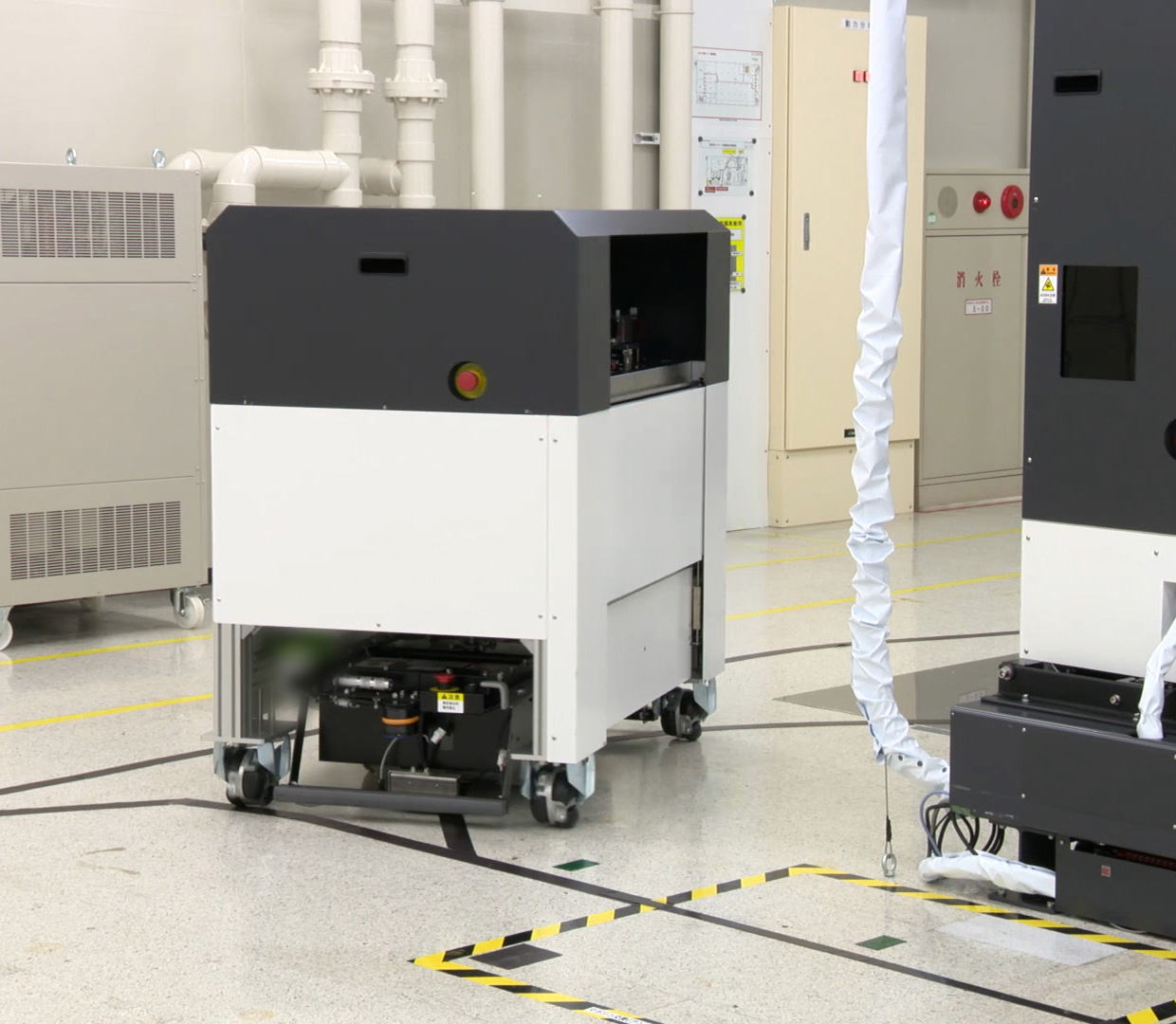
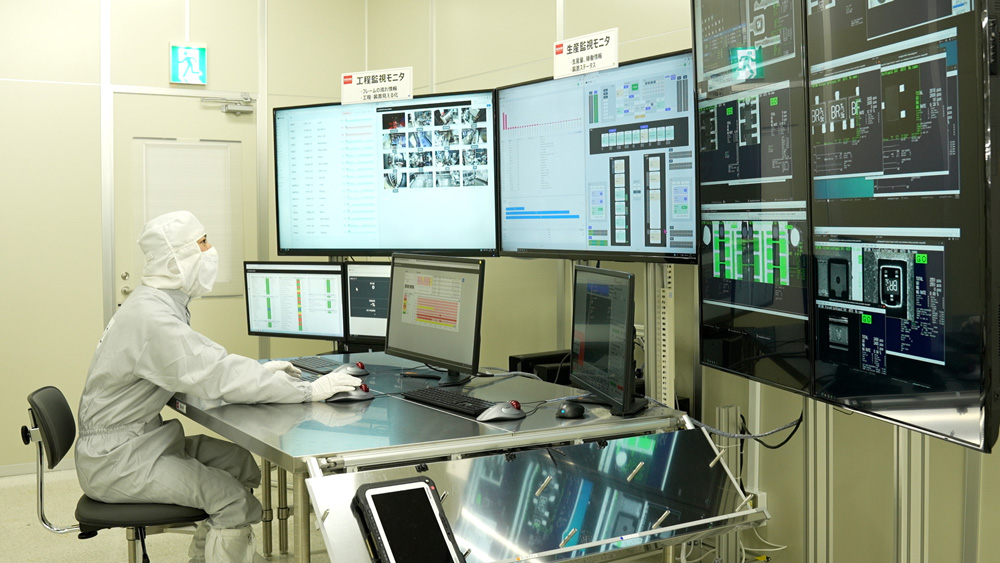
ROHM's Production System
ROHM has a history of developing its own production systems since its establishment in 1954, which is rare among semiconductor manufacturers. Through three generations of main production lines dating to back-end processing in 1980, we have achieved mass production with improved quality and lower costs.
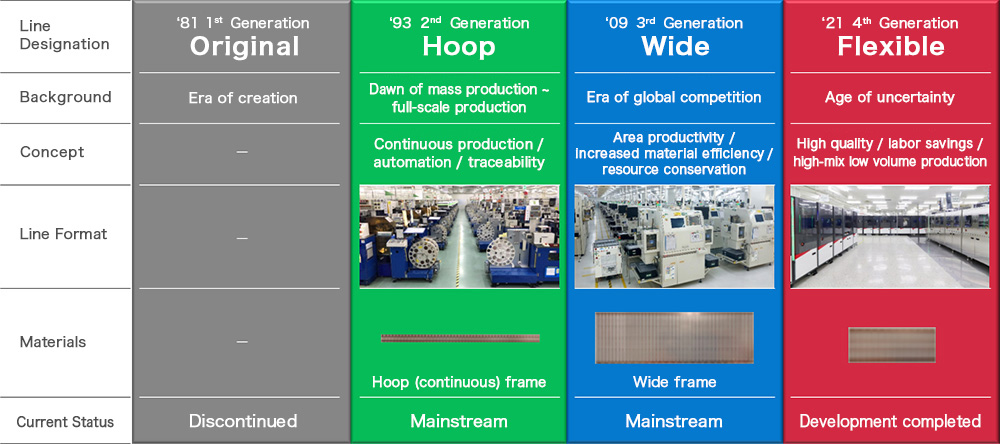
Mr. Miwa, General Manager of the Manufacturing Innovation Dept., who has been involved in the construction of production systems for many years, talks about the evolution of production systems to meet various customer demands as well as the competitive principles of the industry as a whole against competing manufacturers.
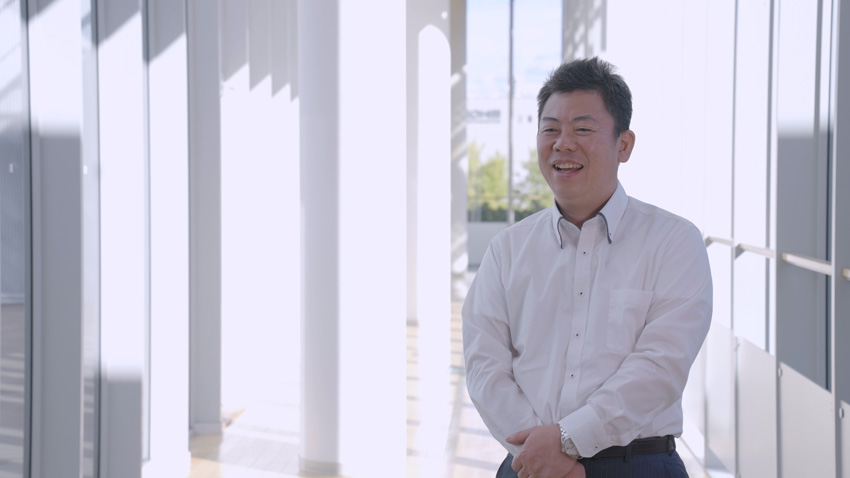
At that time, I visited a manufacturer’s plant and saw how they had achieved high-mix, high volume production.
The feeling that ROHM’s weakness was being exposed was the starting point for developing the flexible line.
Zero defects is the mission
Miwa:
‘Another dilemma we faced was that if we enlarged the frame to increase productivity, a certain level of quality could not be reached. This was a time when quality requirements from customers, especially for automotive products, were becoming more severe year by year, so we decided to develop a production system that will not produce any defective products. We started this project with the goal of achieving zero defects.’
It took about a year and a half for the project to begin full-scale operation in 2018 and verify mass production. In addition to the pursuit of quality, which was a major objective from the beginning, the process of verification while adding the requirements of a next-generation production system proved to be more difficult than expected
Miwa:
‘To be honest, there wasn’t anyone around who understood the concept of creating something that was completely opposite to what had been done in the past. Even within the company, we struggled to find a way to promote this optimized manufacturing equipment. (chuckles)’
Thorough high quality design
In mass production systems, such as the wide line system described above, quality is ensured by introducing own process completion in addition to sorting in the final process. During the design concept of the flexible line, we took the bold approach of reviewing the processing points.
We interviewed Mr. Ariga, Division Manager of the Manufacturing Innovation Dept., who is currently in charge of flexible lines at the forefront.
Ariga:
‘The concept we developed is to ‘build in quality at the processing point. To improve quality at each step of the process, we started by reviewing all aspects regarding equipment, materials, and operations. The key is to minimize the variability of 5M1E.’
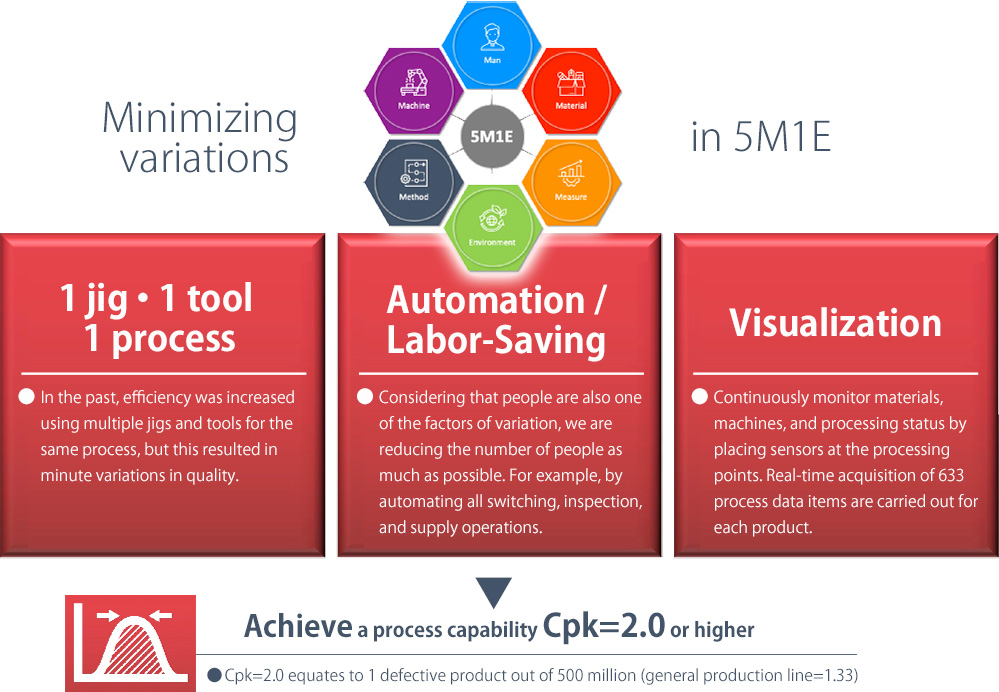
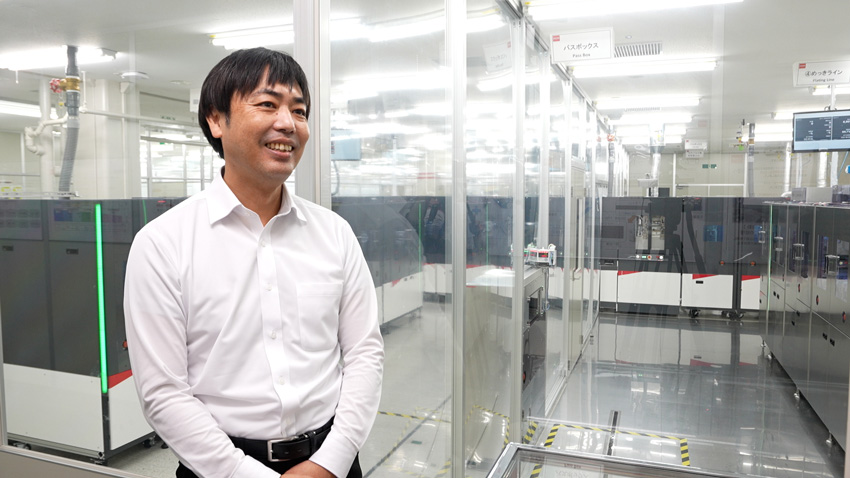
We have set up a glass-walled observation area that allows visitors from Japan and overseas along with aspiring engineering students to view the interior of the clean room.
The state-of-the-art equipment immediately grabs your attention.
‘I am in charge of the series of operations from the development and startup of semiconductor back-end manufacturing lines to the transfer to mass production. To date, we have installed more than 100 pieces of equipment in factories around the world.’
Ariga:
‘Until now, we have relied on the experience and intuition of skilled workers in many areas, but quantifying the results will allow us to achieve significant benefits not only in terms of quality, but also for preventing various problems before they occur.
And in the unlikely event of a customer inquiry, thorough traceability allows us to identify the cause in real time, down to the individual product itself.’

High mix low volume production
ROHM's flexible line has the potential of 4.5 million pcs/month at full production. Currently (as of 2022) we are mass producing two types of transistors, but are looking at commercially mass producing around 10 models in the near future.
This is a major feature unique to this line, made possible by the aforementioned simplification of the switching process through automation. According to General Manager Miwa of the Manufacturing Innovation Division, the fundamental concept is the challenge of ‘manufacturing not centered on mass production’.
Miwa:
‘In an industry where mass production/inventory design is the norm, we are tackling high-mix/low volume production for the first time. This was a challenge in itself. We believe we can provide stable supply by establishing a continuous switching production system using a wide line for large orders and flexible line for smaller quantities.’

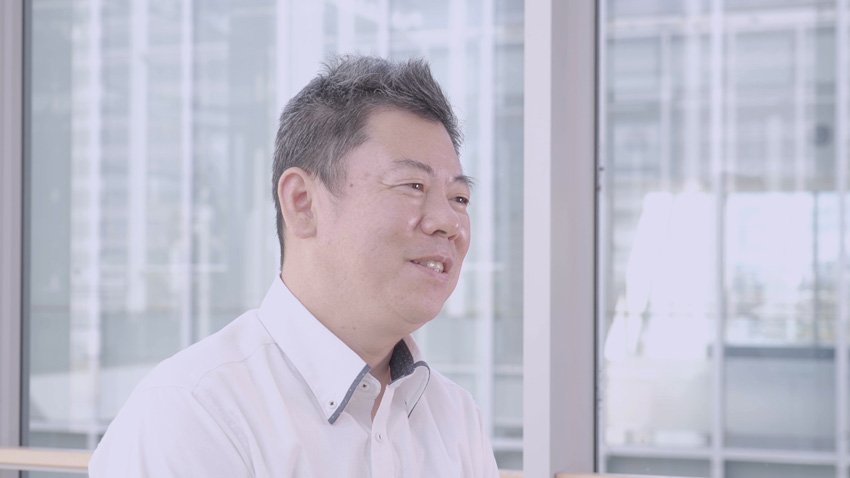
‘What you need when you need it only in the quantities needed.’
ROHM is keenly aware that many of its customers, such as those in the automotive and industrial equipment fields, require small-lot, long-term stable supply of parts.
‘We are pleased to hear from an automotive manufacturer who came to see our flexible line that ROHM was the only supplier that could have come up with such an idea and make it a reality.’
Technology succession with ONE ROHM
Miwa:
‘Since ROHM has an integrated production system, I think it’s important to have an environment that allows for close coordination and exchange of opinions across departments.’
In developing this line, which breaks away from conventional wisdom in the semiconductor industry, it was essential to gather opinions from various perspectives.
At the same time, a long-term cooperative system is required to leverage different viewpoints to improve the degree of completion while repeating design/development → prototype evaluation → mass production evaluation.
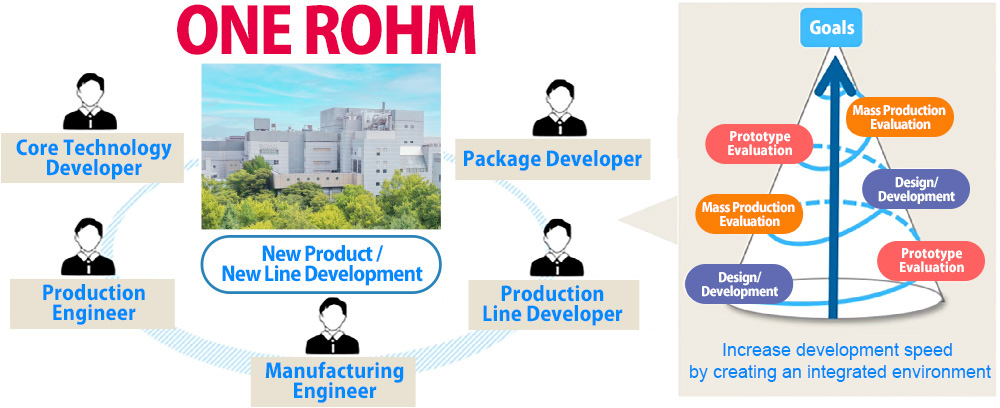
ROHM’s unique environment, with specialists in each department, made this difficult mission a reality.
Miwa:
‘Another key point is the knowledge and expertise accumulated over the last 60 years. In this sense, the flexible line can be said to be ROHM’s ‘technology succession’.’
So says Mr. Miwa, who leads the development site, where he enthusiastically observes and exchanges words with young engineers. Horizontal ties that transcend divisions, and knowledge and spirit passed down from generation to generation.
By continuing to enhance the value of ONE ROHM, Monozukuri can advance step by step into the future.
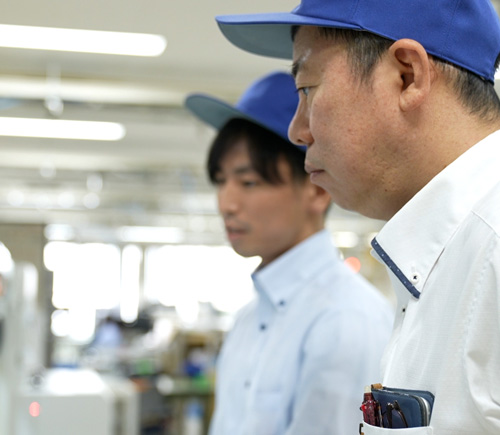
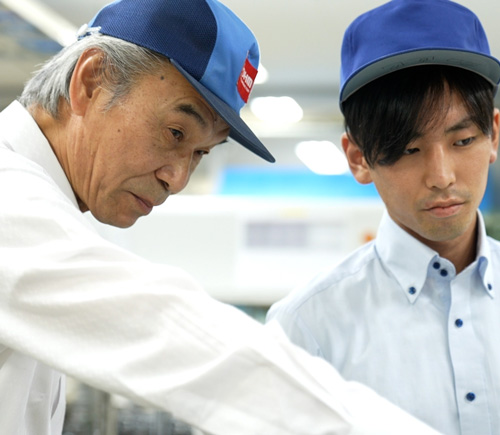
At the Development Center at Kyoto HQ, design, prototype evaluation, and mass production evaluation of various manufacturing equipment used in Japan and overseas are conducted on a daily basis. It is also a place where young engineers learn about monozukuri (manufacturing).
BCP / Environmental measures
Mass production verification of our flexible line began in 2020. The world was in the midst of the COVID-19 pandemic. I’m sure it’s still fresh in everyone’s mind that manufacturers in the automotive, consumer electronics, home appliance, and other industries were forced to take measures to cope with the delay in the production and distribution of semiconductors around the world.
Since then, the environment surrounding the manufacturing industry has been undergoing constant transformation, including the continuing review of production bases in Japan, as the shortage of semiconductors has not yet been resolved due to soaring energy prices and natural disasters. Against this backdrop, the flexible line is attracting attention as an effective production system for BCP measures.
Masuda:
‘The flexible line has a very high rate of automation, so by installing the exact same equipment at multiple locations it will be possible to manufacture products with the same quality at any time as needed.
In these uncertain times, I believe that this will become indispensable when it comes to providing stable products to our customers.’
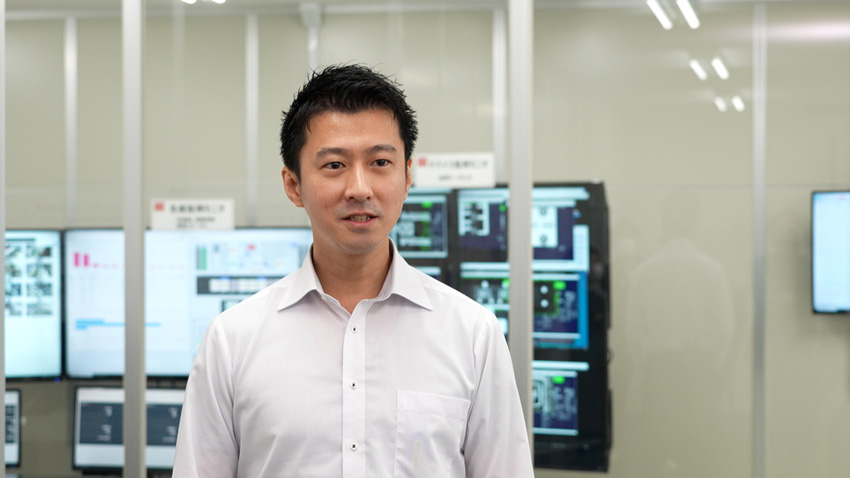
Development Segment, Manufacturing Innovation Division
Thoroughly automating and reducing manpower translates to around double the human productivity compared to conventional production lines. A remarkable -87% reduction in operator work hours has been calculated.
‘ROHM has a culture that gives us the freedom to take on projects like this one, where we don’t know if we’ll land on our feet.’
Another major feature is that the data collected by the aforementioned ‘visualization’ can be used to continuously visualize and monitor energy usage. As global environmental conservation becomes a major issue, we seek to reduce CO2 emissions from electric power and promote energy savings in manufacturing.
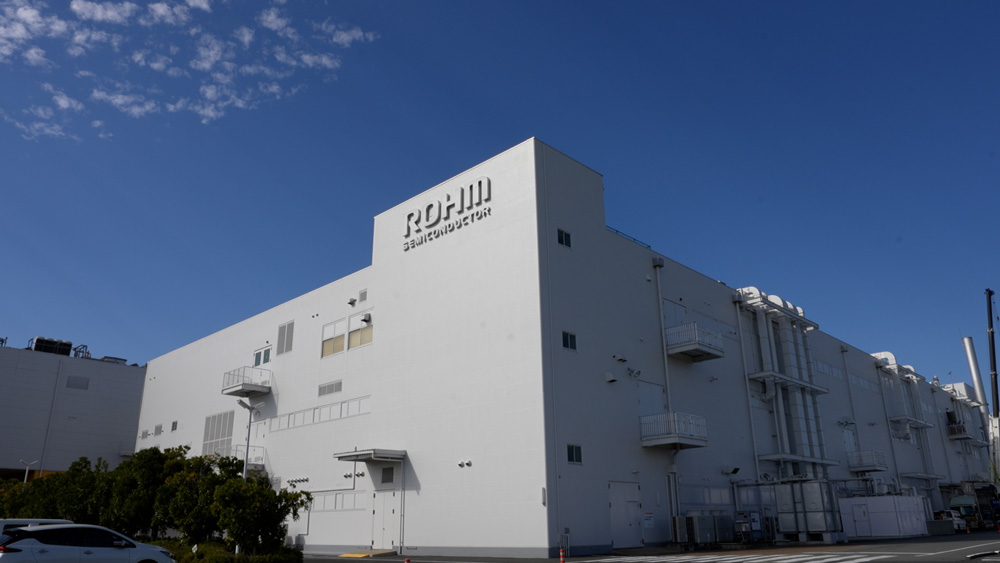
(Hirokawa, Yame-gun, Fukuoka)
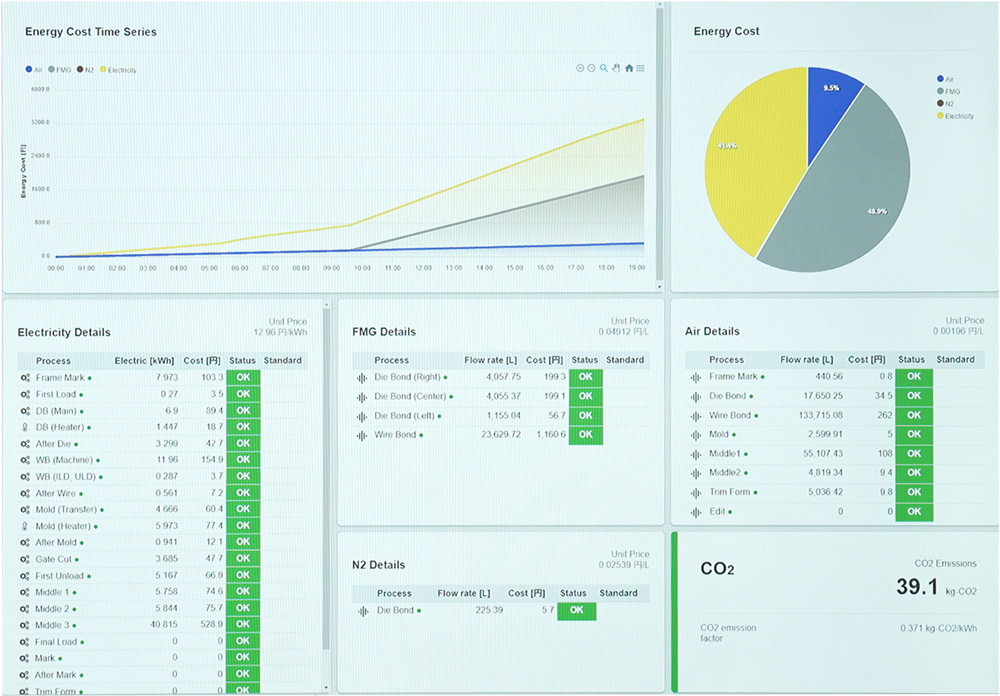
in real time and converted to CO2 emissions
Aiming for a sustainable society...
An era in which the environmental performance of production is severely questioned.
ROHM as a whole is working to save energy and resources, including in the supply chain.
A new manufacturing platform
Masuda:
‘We are currently in the process of accumulating various technical verifications while mass producing on this line. Our immediate mission is to apply the element technologies obtained here to the next-generation of production lines we will develop in the future.’
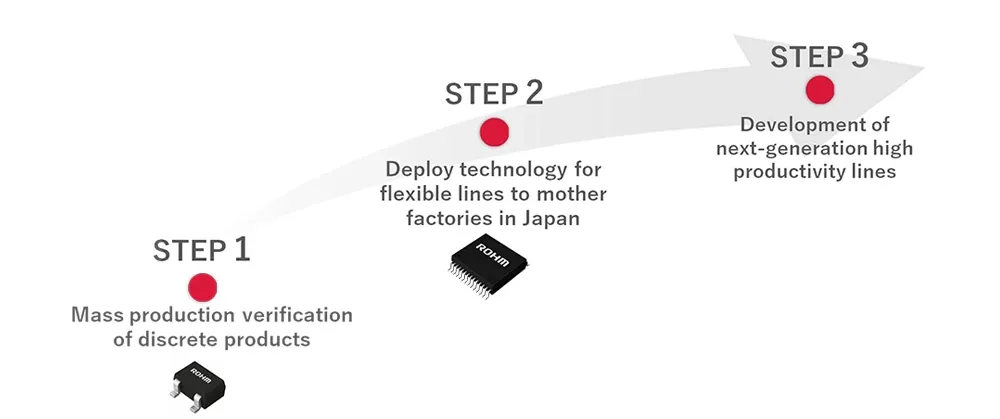
Going forward, this technology will be applied at the mother factory in Japan while expanding the number of models produced at the Hirokawa factory.
We are currently not in a state to catch a breather until the unmanned wide line (mass production line) is completed in the next few years.
Towards a new manufacturing platform trusted by customers around the world.
The development and evolution continues...



Miwa:
‘From the ‘90s to the 2000s, ROHM developed what we call hoop/wide lines. These were developed to deliver high quality mass production at low cost. Though they remain ROHM’s main production lines, we believe there is still room for improvement in terms of processing capability, human productivity, and lead time, which will keep us one step ahead of our competitors.’